Why we ran it: To see if this humble but capable, seven-seater Dacia Jogger was slick enough for day-to-day use
Month 6 - Month 4 - Month 3 - Month 2 - Month 1 - Specs
Life with a Dacia Jogger: Month 6
Our senior photographer pushed this seven-seat estate to its operating limits for 18,935 miles. Here’s his final verdict - 18 Jan 2023
Thanks to modern oils and metallurgy, today’s cars don’t need servicing as often as they used to. At least that’s what the manufacturers say and prescribe. As a result, a lot of our long-term test fleet never sees a service bay from the inside before they go back to their makers. However, as a result of several jobs up north, plus a big holiday to the south of France and the big distances I usually cover for work anyway, I’ve managed to rack up more than 18,000 miles in just a few months.
So the Jogger told me it wanted servicing. I rang my nearest Dacia dealership, City Motors in Bristol. They managed to get me an appointment in a matter of days, which was helpful, because with the mileage I do, it would be easy enough to stray over the service interval.
Normally, the first service involves only an interior filter change and a general checkover, but for high-mileage drivers like me, Dacia recommends also doing the oil change at the same time. Normally, it reckons this can wait until the second year. So that’s what they did. They were very friendly when I dropped the car off and I just went to a cafe around the corner to do some work, but it didn’t take long for the car to be done.
All in, a good experience, although £299 does seem on the high side for a simple oil and filter change on a 1.0-litre three-cylinder engine. But with that, my time with the Jogger has come to an end. A budget estate car is not the sort of thing I’d naturally gravitate towards. The extra height of an SUV, let alone something van-based, is quite useful for loading all the stuff I often need to transport. But while I was more resistant to the Jogger’s charms than some of the journalists I work with, it did prove a practical and easy-going companion. Let’s cover some of the annoyances first.
Over time, some of the cheapness did start to grate. Not so much the interior materials, which were cheerful, but the lack of USB ports and the flimsy yet springy load cover were daily irritations. Above all, the driving position isn’t as well resolved as you’d hope in a modern car: there’s not enough reach in the steering wheel, the seats don’t have enough thigh support and the headrests are too far forward. No big deal if you just take the kids to football practice once a week, but rather tiring if you do big miles. The seating arrangement also isn’t as flexible as on MPVs of old.
The rearmost row can be taken out or flipped forwards, but they don’t fold neatly into the floor, and because I don’t have much use for seven seats, I had to choose between them taking up space in the boot or in my lounge. Most of the time, they stayed in the car. Aside from those niggles, though, the Jogger ticked a lot of boxes. Even with the seats folded, the boot offered plenty of space for all my kit. Removing seats liberated all the space we needed for a four-person climbing and camping holiday to the south of France.
Then we discovered possibly the Jogger’s best feature: the integrated roof rack. Most estates have roof rails, but in the Jogger you can undo them, turn the bars 90deg and create a roof rack for surf boards, or anything else that’s too long to fit easily inside. It’s such a simple but effective feature.
On the road, the car simply got on with the job. I had some concerns that a 1.0-litre three-pot with 109bhp might be underpowered for a car like this, especially when loaded with people and luggage. However, it was absolutely fine, even when driving in the French mountains.
You need to work the manual gearbox, but it’s a precise, light shift, so it even introduces a bit of fun into what could be a very prosaic sort of vehicle. On the whole, I think I liked the Jogger more for what it stands for than what it is. Some of my other long-term test cars have been even more practical and even more comfortable. But the Jogger is such an unpretentious car. It’s not about the biggest wheels, the fastest 0-62mph time or the most tenuously racing-inspired styling. It just does what you need it to.
And yet it actually got compliments. One of my friends, who’s not into cars and would make no assumptions on seeing the Dacia badge, commented on what a nice car it was. And it’s true: away from any snobbery, it’s a sharp-looking car with (almost) all you need, such as Apple CarPlay, cruise control, climate control and enough power. In the end, you just can’t get around the value of the thing. Annoyingly, the Jogger has gone up in price by £2150 since it was launched, but so have all other cars, and there’s nothing else on the market with anything like this car’s space or utility for similar money. That makes it quite unusual, and the sort of car I might buy if I needed a do-it-all everyday load-hauler.
Second Opinion
I was sceptical of the Jogger hype that seems to live among my fellow motoring journalists, but then I drove Luc’s and just found it an elegant piece of design. Not in a Jaguar E-Type kind of way, but in the sense that it has everything you need and nothing you don’t, and it’s so fit for purpose. It’s even quite decent to drive.
Illya Verpraet
Love it:
Integrated roof rack In about five minutes, using a tool that comes with the car, the roof rails can be turned into a roof rack.
A 'proper' spare wheel Full-sized spare wheel is a £300 option but proved well worth it when I got a puncture on the motorway.
Interior ambience It’s no Rolls inside, but the pieces of fabric and ‘metal’ liven it up and stop it feeling bargain basement.
Loathe it:
Seats on long journeys The seats just get a bit tiresome on long drives – particularly the headrest, which sticks out too far.
Luggage cover It’s the one element of the interior that really feels cheap. There’s no handle, it’s flimsy and it’s springy.
Final mileage: 21,430
Keyless entry can be a bit fussy - 4 Jan
The Jogger has keyless entry, which is surprising but very welcome in a budget car. But as with Renaults, the system is a bit backward. It unlocks the car as you approach but doesn’t automatically lock it when you leave. A few times I’ve locked it and then walked past it, making it unlock itself again, so then had to dig out the key and lock it manually. Again.
Life with a Dacia Jogger: Month 4
Puncture? The Jogger's got you covered - 30 November
I picked up a puncture on the motorway recently – often a stressful experience – so it was a huge relief that the Jogger actually has a full-sized spare wheel. I changed it on the hard shoulder, and although it made me late for a job, at least I got there – and I didn’t even have to drive slowly like you need to with a space saver wheel.
Mileage: 20,988
Jogger's collision system isn't the best in the business - 16 November
I’ve had a few false warnings from the collision avoidance system. Its alarm has gone off a few times, but the other week it actually applied the brakes for no apparent reason and that feels downright dangerous. Dacia has been criticised for not fitting certain assistance systems, but going on recent experience, that sounds like a benefit to me.
Mileage: 20,776
Of course this car’s nowhere near as fun as a Porsche Taycan. Right? - 9 November
My number one priority for any long-term test car is for it to swallow my photography gear as well as any camping, surfing or climbing paraphernalia I can throw at it. That’s why some of the most fondly remembered ones have been the van-based cars such as the Citroën Berlingo and Ford Transit.
They’re a tool for a job, and as long as they don’t fall over when aimed at a corner with some gusto, their lack of handling appeal is a compromise I am happy to accept. And on the practicality score, the Jogger has already more than proven its usefulness on several weekend jaunts. With that being said, both weekends away and shoots for work take me to plenty of great destinations with twisty roads, and the Jogger has surprised me with how game it is.
It’s no hot hatch – fairly soft suspension sees to that, but it never becomes wallowy. There’s enough grip that you’re never waiting for the front to bite, and the steering communicates pretty well. The Jogger is actually pretty good fun through corners and you can really keep the pace up if you feel like it.
You have to work for it; with its 109bhp, it’s not exactly fast, but I’ve generally found it sufficient. I also drove the Dacia into London recently, and as you come inside the M25, the other motorists’ aggression seems to go up a notch, so I occasionally needed to stretch the little engine to claim my place on roundabouts and junctions. Even so, the triple provided plenty of pull to do so safely.
As I’ve previously noted, the manual gearchange is really precise and the engine willing to rev, which adds to the fun on the open road. It makes me wonder how much more you really need. When I was shooting our recent electric driver’s car test (Autocar, 28 September), I had a short drive in the Porsche Taycan, and although it’s a world away from the Jogger in terms of performance and luxury, I’m not convinced it’s much more fun.
While I’m generally very happy with the Jogger’s performance, I have noticed one niggle. The throttle can be a bit on-off, which isn’t conducive to driving smoothly in town. It’s a minor issue, though, because pressing the Eco button calms it down.
Anyway, back to the practical stuff. Several weeks into Jogger ‘ownership’, I’ve finally tried out the modular roof bars. I wish I’d done so sooner, because they are a stroke of genius. The Jogger, like most estates and SUVs, has roof rails. Typically, you then have to buy a separate roof rack to be able to mount anything to them. And when you’re not using the roof rack, you need somewhere to store it. Now, I live in a flat and don’t have a garage or an attic to store unused accessories, so that’s no good.
The Jogger, however, is so much cleverer. You can simply undo four bolts and remove the centre section of the roof rails. You then put them back to span the width of the car, with a choice of two positions for the rear crossbar. You need a Torx key for the bolts, but that’s included with the car. It’s absolutely perfect for mounting surfboards to.
It’s frustrating there aren’t more cars that have this system, because it solves two problems at once. You don’t have to spend money on a roof rack that might see limited use, and the thing doesn’t take up space in the garage – if you even have one. I suppose ‘genuine’ accessories like roof racks are a nice bit of extra profit for car makers, but Dacia’s approach fits in brilliantly with its philosophy of not charging more than necessary.
That sort of solution is the kind of thing you could always find in French people carriers, but that genre has recently fallen by the wayside. Happily, Dacia is picking up the slack.
Love it
Gauges
Whizz-bang digital gauges look good in a brochure, but more often than not fail to capitalise on the possibilities. The Dacia’s small screen shows all the info I need, and the analogue speedo and tacho are clear and oddly pleasing.
Loathe it
Rear-seat space
The Jogger may be one of few seven-seaters in which adults can realistically endure the third row, but that comes at the cost of second-row space. Disappointing.
Mileage: 20,327
Life with a Dacia Jogger: Month 3
The Jogger's touchscreen could be better - 26 October
Some touchscreens look neater than the Jogger’s. The one in the Porsche Taycan I drove recently sat lower, where it was easier to reach, but that left it farther from my natural line of sight, and I’d rather have arm ache than an accident. I use Apple CarPlay rather than Dacia’s software; the connection is mostly stable but crashes about once a month.
Another trip into the great outdoors strengthens some opinions, good and bad - 19 October
The Jogger had its second touring trip recently when my girlfriend and I took it for a busy weekend in Pembrokeshire. It wasn’t quite as long a trip as the one I wrote about last time, to the Verdon in France. But it did involve a boot-load of camping gear, climbing kit and surfboards – and it gave more proof of this car’s excellent suitability for those with active lifestyles, who like to get out and about in beautiful open spaces.
My dream vehicle for these kinds of trips will always be a van: something you can just throw gear into and then convert for sleeping inside with the minimum of hassle. But I would say that, considering what it is and how little it costs, the Jogger did a great job of accommodating our needs.
It’s actually big enough in the boot that I haven’t yet had to explore the capabilities of the convertible roof storage system. Our tents, boards and bags went in with space to spare, and when the weather is warm and the stars are out, few of us really object to sleeping under canvas, do we?
We found an idyllic spot to camp close to the sea (this was a few weeks ago, before the weather turned cold, I hasten to add) and had a great time.
The area we visited is pretty easy to reach from home in Bristol, so no long days at the wheel were required this time. That was a bit of a relief because I don’t find the Jogger ideal for extended driving stints.
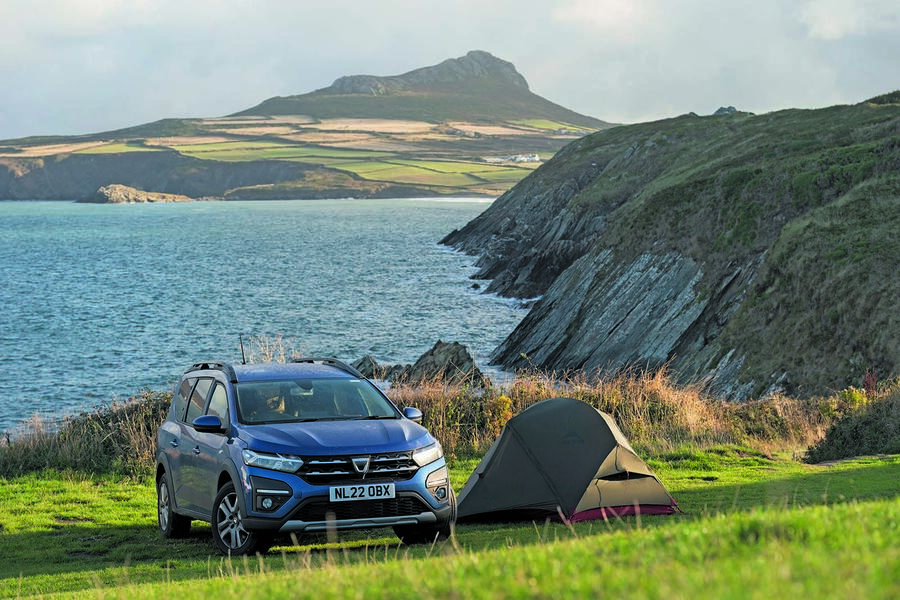
I’m still finding the driving position wanting for that last bit of adjustment in the steering column and headrest. In order to be close enough to the wheel, I need my seat backrest inclined quite steeply, and that tends to push my head further forwards than I find comfortable.
I’m tall, so I would’ve appreciated a seat cushion extension to support my legs on longer trips too, although some things aren’t expected on £18,000 budget cars. But I don’t see why even a pretty basic driver’s seat design couldn’t be more adjustable than this. To begin with, it didn’t bother me so much, but as time goes on, I’m finding it harder to forgive.
After we got back, normal life resumed for me and the car – which consists of a lot of motorway miles back and forth to jobs and not very much transportation of people in between, which I expect most Joggers would be more likely to do. On the one hand, I guess that’s allowing parts of the car a fairly easy time, with no kids to scuff the mouldings with their feet, to wear out the back seat cushions or to fill the rear storage areas with empty drinks containers, apple cores and crisp dust.
But my camera bags aren’t such a bad substitute for passengers in some ways, belted in the back, where I can more easily access them than I would if they were buried in the boot. The one exception came the other day, when we picked up one of my girlfriend’s friends. She’s not a car lover by any means, but people like that are so often the best judge of cars, because they come with so few preconceptions.
The Jogger made a good first impression on her, suffice to say. She wouldn’t have recognised it, or the Dacia badge on the bonnet, which probably wouldn’t have meant much to her even if she had. But she just hopped in the front and was kind enough to say what a nice, neat car we had, with all the features you would want on one.
The Jogger is a pretty ordinary car when you really get to know it: versatile, of course, and surprisingly likeable and engaging to drive, too – but, with a few exceptions, it’s not the kind of car that tends to win compliments from too many of the motoring journalists that my working life keeps me in touch with.
On that day, though, it wasn’t so ordinary that it failed to make an impression on an ordinary person who had just got in from the street. Our Jogger was a pleasant surprise, not some instantly cheap-looking austerity special – and I think that says good things about it.
Love it
Manual gearbox
As we’re driving more and more electric cars, a decent manual shift and a keen-revving petrol engine is a real invitation to enjoy myself.
Loathe it
Load-bay cover
The load-bay cover is still pinging off in my hands, too often pulling bits of boot trim loose as it does so. An atypically poor bit of design.
Mileage: 16,147
Is our bargain MPV really such a great seven-seater? - 5 October
My first occasion to actually put passengers in the third row of our Dacia Jogger presented itself recently when driving some friends on a night out. All were fully grown adults (or at least claimed to be), but even those who had to travel in the very back didn’t complain about the space they had, or how easy it was to get in and out, which impressed me.
You just expect seven-seaters of this size to effectively cater only to kids in row three. While that’s broadly true of the Jogger, it also seems ready to transport bigger sixth and seventh occupants fairly well on shorter trips.
I’ve written previously about spending time as a passenger in the car’s second-row seats myself and having enough room there – which, as a 6ft 4in bloke, isn’t to be taken for granted. So I would agree that this is a surprisingly spacious and well-packaged family car for its size.
But I’m beginning to wish that some of the little details of the car’s functional design had been better thought through. It must be a challenge to organise the interior design of a car at a point where you have removable flip-up third-row seats, inertia-reel seatbelts for those seats, a retractable load-bay cover and an accessible cargo area all to fit into the same space. But let’s just say the Jogger could do it better.
To start with, if like me you tend to drive with the third-row seats on board but flipped up (so as to give a usable five-seat-mode boot), you will find that the outermost extremities of the retractable load-bay cover too often snag on the third-row seatbelts as you roll it into place or roll it back.
It’s a slightly badly designed cover anyway, being unnecessarily firmly sprung and having no easily grabbable handle by which to move it. But this tendency to snag on the seatbelts, sometimes even pulling bits of boot trim off as it snaps back open (there are clips intended to secure the belts and keep them out of the way, but they don’t work well, and the trim panels to which they’re fixed aren’t so well secured themselves) makes it all the more frustrating.
Then there’s what can happen if you’re not careful when you’re flipping each seat down for an occasional third-row passenger: the rearmost lower mounts for the seats can too easily trap and then bury the seatbelt itself within the mount mechanism as they click home.
This has happened to me a couple of times. It’s frustrating if you haven’t noticed until your passenger tries to belt up, because then you have to get out, open the boot and flip the seat back up again to release the thing. But my main worry, justified or not, would be about the strength of the polyester belt strap itself if you did it time and again by mistake.
It’s definitely something that I will be mindful of over the coming weeks as our test continues. Building clever seven-seater versatility into a car isn’t easy. The Jogger isn’t quite Dacia’s first try, and in some ways it does it well. Where the not-so-clever elements are concerned, however, knowing about them is half the battle.
Love it
Engaging drive
It’s a manual, the engine likes to rev and there’s a light touch to the controls: things that you might associate with cheap cars but that make it seem eager to please.
Loathe it
Remote locking
Renault’s keyless system is still flawed. It too often unlocks when you don’t want it to or won’t lock when you do. It needs a lock/unlock button on the door handle at least.
Mileage: 12,586
Life with a Dacia Jogger: Month 2
Ergonomics are almost retro-styled
Photographing details in cars often makes me suspicious of those that try to distract you from lower-rent materials with the odd flashy detail. Funny, then, that I like the Jogger’s shiny, knurled-effect climate control knobs so much. It’s partly because they’re so big and easy to get hold of but also because they look like something found in an Audi TT.
Mileage: 12,338
Our bargain utility car goes climbing, and cornering, in the south of France - 21 September
I have just returned from a 10-day climbing excursion with friends to the spectacular Gorges du Verdon in the south of France. We put close to 2000 miles on the Jogger over that time, mixing autoroute with minor-road motoring; and camping mainly, with a few short hotel stays here and there
We relied on the car in ways I haven’t previously, and it coped amazingly well for what is a seven-seat family car that costs less than a supermini.
Getting 10 days’ worth of supplies and equipment into the Jogger’s boot gave me cause to take the third-row seats out completely for the first time. I was pleasantly surprised how easy it was to do, and how light they were to carry (especially compared with those in my old Ford Tourneo Connect).
Thus converted, the Jogger’s boot was able to swallow almost everything we needed for the trip, allowing for a little inevitable overspill onto the vacant back seat. I’ve put the rearmost seats back into the car since – not because I need the passenger berths (the bigger boot would be more useful for me day-to-day) but just because I don’t have anywhere suitable to store them.

Being fabric, they are not something you can keep outside, but they’re not quite small or light enough to leave in the corner of the living room either. A garage, if I had one, would be ideal.
Over the course of the trip, the car drove more assuredly than you might think. Three up and loaded, it still had more than adequate performance even with that 1.0-litre three-pot engine. The gorge roads of the Verdon are twisty and steep, and there were one or two occasions when we had smelly hot brakes, but at no point did that motor struggle; nor did the chassis, really.
My friend Jonny says the pedals are surprisingly well placed for heel-and-toe gearchanges – vital intel for potential Jogger buyers. One or two minor practicality gripes emerged, though.
That there is only one USB charging port in the car caused a queue for device charging when we spent night after night under canvas (we bought a 12V USB adaptor to double the port count); and I still don’t find the driving position as comfortable as it should be (there’s not enough steering column reach adjustment, and the front headrests only adjust up and down).
But I did find myself pretty comfy in the back most of the time, I’m pleased to say – except, perhaps, when Jonny’s driving was at its most enthusiastic, and the gorge roads were at their twistiest.
Love it
It's unrivalled
If you have an active lifestyle like mine, this genuinely affordable and versatile car is in a class of one.
Loathe it
Driving position
Because I’m tall, I’m either too far from the steering wheel or too close to the pedals. When I wind the backrest up to mitigate this, the headrest pushes my head forward.
Is no-frills interior common sense or an affront to the senses? - 31 August
Life with the Jogger continues, and so far, this Romanian-built, budget-friendly, seven-seat option is proving likeable and adept.
I’ve not had the opportunity to properly stretch its 999cc, front-driven legs yet (although my colleague Felix Page has done so, the resulting 2000-mile feature appearing in last week’s issue), but hopefully that will happen soon enough – and before then, there’s plenty more worth discussing.
Starting with the interior, which is where unflattering cost-cutting is usually most apparent and is probably where most reservations harboured by any prospective Jogger buyers will reside. However, it isn’t the explosion of cheap plastics and rough fabrics that you might expect it to be. That, indeed, I was absolutely expecting it to be.
Clearly, it’s all built to a cost and in outright plushness is a step down from what you get even with the traditional master of the rational car purchase, Skoda, but there’s nothing that offends in here, and there’s actually something of modern Audi about the gearlever and the climate-control dials.
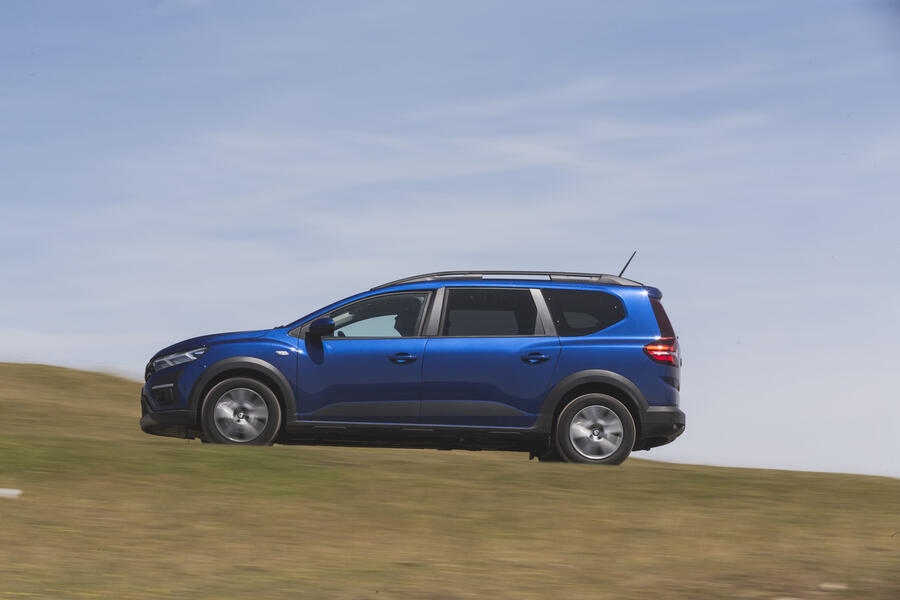
I also like the textural variety of the dashboard, which gives this monotone cabin a much-needed visual lift and mitigates some of the coarser material elsewhere. In short, I find the Jogger’s interior perfectly acceptable when it comes to ambience.
Unfortunately, I can’t quite say the same about the driving ergonomics. Visibility is fine and there’s nothing dangerous here; it’s just the driving position, which is hampered by the lack of steering-column adjustability and the fact that you can’t set these seats especially low. It means taller drivers are stuck with a short-leg, long-arm layout of the type found
in old Italian performance cars. It’s a bit van-like and not especially comfortable. However, worse still are the headrests, which I imagine wouldn’t receive the blessing of many chiropractors. They jut forward, pushing your head forward and in turn compounding my existing ‘millennial mobile phone’ neck.
The general ergonomics are better. Rear-seat space is good, and even the third row is a realistic prospect for adults, if only for journeys of up to, say, an hour’s duration. What’s really useful is that those back-row seats can be fully and easily removed from the car.
Do this, and also fold (and then tumble) the second-row seats forwards so they nestle up to the backs of the front seats, and you’ve got outright carrying capacity that’s roughly equal to what you get from the Mercedes-Benz E-Class Estate. I find this ridiculously impressive for something built on a supermini platform and a real string to the Jogger’s bow.
Assuming you have space in your house to store the rearmost seats, the car is indecently capacious but not always the most comfortable for the driver. It’s a true tool car in this respect, which is as you would expect, but when Dacia devises changes for the eventual facelift Jogger, a more car-like driving position should be top of the list.
Love it
Infotainment
There’s no nav, but the system is otherwise modern and generally nice, and it works well with Apple CarPlay and Android Auto.
Loathe it
Driving position
I’m not getting on particularly well with the short-leg, long-arm arrangement. The headrest pushes your head forward awkwardly, too
Mileage: 11,481
You can live easy with the Jogger - 24 August
There are plenty of economy-spec materials in this car, unsurprisingly. You do notice it. But it’s reasonably cheerful, and if opting for the Jogger means your heating bills will be that much easier to pay this summer, more power to you. Simply, you can easily live with this in a seven-seater that costs little more than £18,000.
Mileage: 1080
Welcoming the Jogger to the fleet -17 August 2022
As a photographer (and not in any official way a writer), I tend to leave the undercooked and overblown opinions on cars to our team of road testers. After all, it’s what they exist to do.
They possess a collective experience that you won’t find anywhere else, so if you need to know about the transient handling of a Mazda MX-5 or the steering-wheel adjustability in a Toyota Aygo, they’re usually able to enlighten you.
However, when it comes to Tardis-rivalling esoterica that doesn’t get much of the limelight but does generate cultish followings, usually by virtue of versatility and low-key personality, I have an edge: I understand these cars, having used them often, and I like them a lot.
My need to transport photography kit nationwide and my love of camping, climbing and surfing makes me the go-to custodian of such motors in the long-term fleet. In the past few years, I’ve had the pleasure of running a Citroën Berlingo, a Ford Transit, a Skoda Kodiaq and a Honda HR-V.
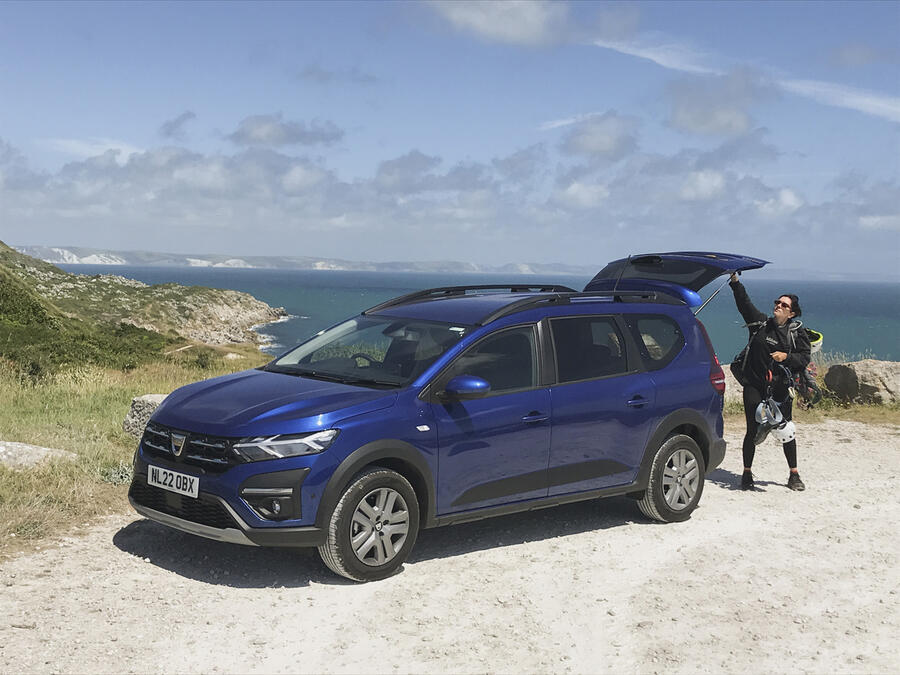
I enjoyed them all in different ways but especially the Berlingo, whose frugality, space and truly captivating long-haul grace made it an indispensable companion for my lifestyle. One day, I will buy one.
Or will I? Not to disrespect the memory of the Citroën, but if there’s a machine to displace it at the top of my own-money buying list, it might just be the Romanian seven-seater that has recently arrived.
You may already have heard of the Dacia Jogger, because tremors of its incipient cult status are already starting to be felt. It’s a little rustic but also quite smart and extremely inexpensive for what it offers, costing less than £16,400 in its most basic Essential trim.
Whether its legend ever surpasses that of the Skoda Yeti – that longstanding king of the plain but acceptably well-heeled high-utility class and unexpected darling of the British middle classes – remains to be seen, but it has every chance. Not least because I already like it – and, as already explained,
I get cars like these. The Jogger is neither an MPV nor an SUV, and it isn’t really a crossover either. Come to think of it, it’s sort of a stretched Yeti: long and tall but only to the extent that you might, at a distance, confuse the silhouette for that of some Volvo estate.
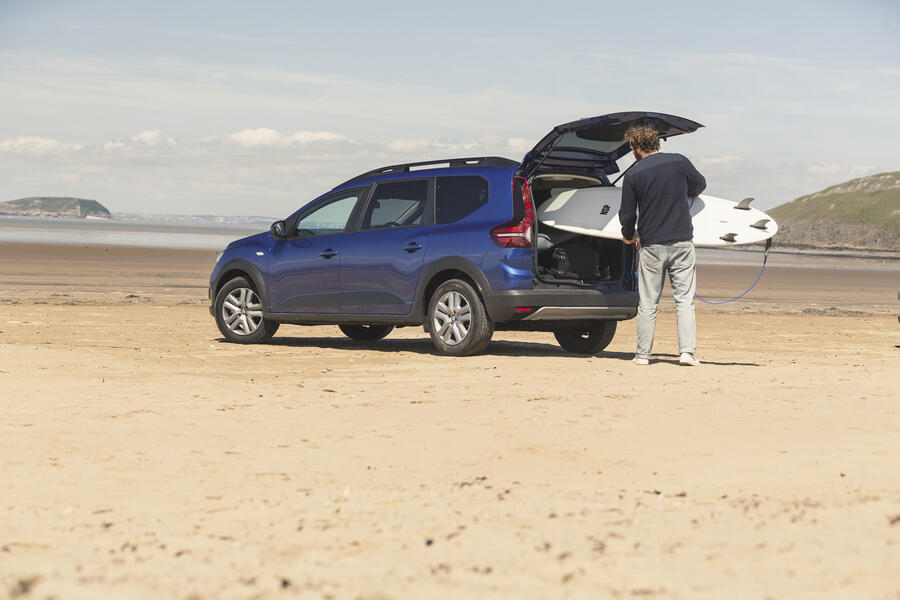
Except it isn’t actually all that big. According to the road testers, the footprint is a little shorter than that of a typical C-segment MPV such as the BMW 2 Series Active Tourer and the basic underpinnings are shared with the Renault Clio (Renault owns Dacia). So it should prove manageable.
It nonetheless features that third row of seats, which can be lifted out wholesale to create an extra-deep boot with 1800 litres of capacity. That’s basically what you get in a Mercedes-Benz E-Class Estate, which is the OG family Tardis.
It has decent ground clearance, too, which is sure to come in handy on rugged tracks down to campsites and photography locations, although you can’t currently buy a Jogger with four-wheel drive. Still, simplicity in the driveline department ought to make it frugal, and our car claims to achieve 48.7mpg combined.
So what exactly is our car? It’s a Jogger TCe 110 in mid-ranking Comfort trim. And unless you’re going to treat this as an out-and-out utility car, Comfort is probably where you would start.
Entry-level Essential doesn’t even come with an infotainment system and certain safety aids, but Comfort gets those, along with modular roof rails, automatic wipers and a reversing camera. It also gets body-coloured door mirrors and bumpers, cruise control and, handily, a tyre-pressure-monitoring system. Go for top-billing Extreme and you add alloy wheels, heated seats and touchscreen infotainment.
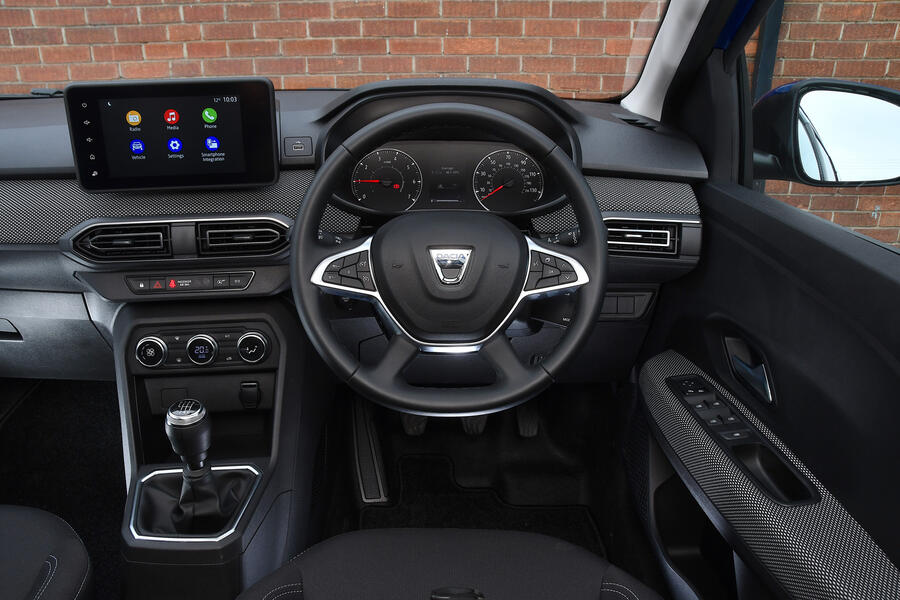
As for the oily bits, there’s a sideways 999cc turbo petrol engine paired with a six-speed gearbox. For now, this is the only configuration available in the UK, although a more powerful 1.6-litre hybrid will make its way here next year. Chassis-wise, there’s not even the option of adaptive dampers and the back axle is by torsion beam (although let’s not pre-judge).
What I will aim to find out over the next few months is just how well the Jogger works with sustained real- world use. Is it really comfortable enough over distance? Just how versatile is the seating? Is 108bhp enough if you have more than five people in the car or lots of kit? Is this vehicle truly spacious enough? Is the Jogger as frugal as Dacia claims?
And, let’s not forget, can this car burrow under your skin like the characterful best of its kind? Plenty of questions, and now plenty of time to find some answers.
Second Opinion
I’m looking forward to borrowing the Jogger from Luc, not least to find out what the ride is like on those tiny steelies (don’t be fooled by the plastic covers!). It may be ruggedly attractive, versatile and cheap, but if this car can’t waft, I’m not really interested.
Richard Lane
Dacia Jogger 1.0 TCE 110 Comfort specification
Specs: Price New £17,945 Price as tested £18,840 Options Iron blue paint £595, spare wheel £300
Test Data: Engine xxx Power 109bhp at 5000-5250rpm Torque 148lb ft at 2900-3500rpm Kerb weight 1205kg Top speed 114mph 0-62mph 11.2sec Fuel economy 48.7mpg (claimed) CO2 130g/km Faults None Expenses None

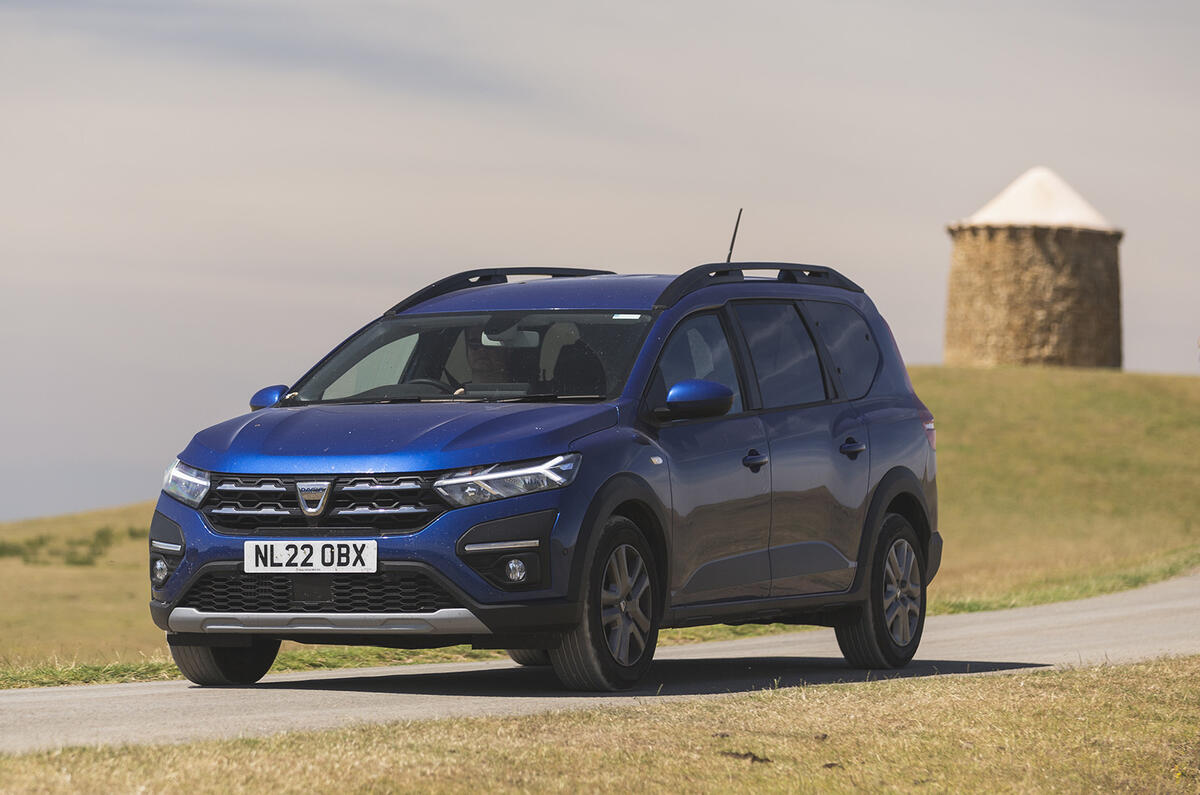


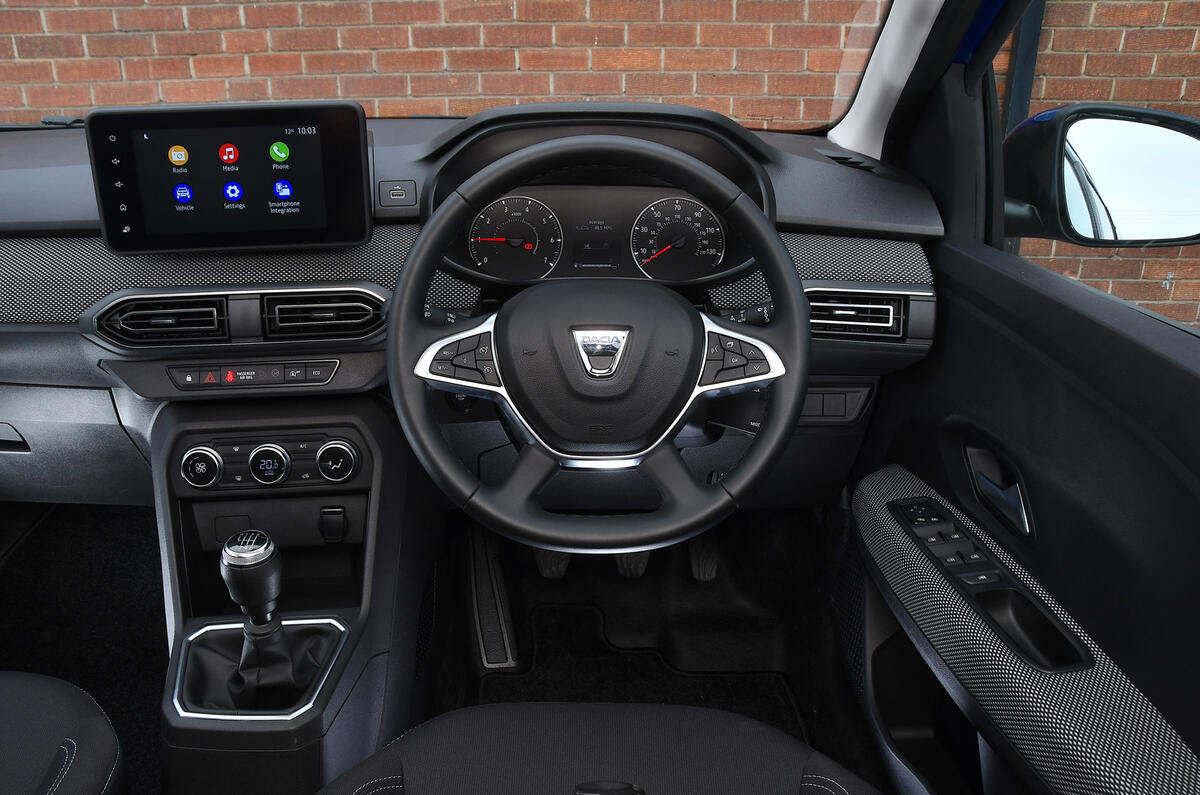
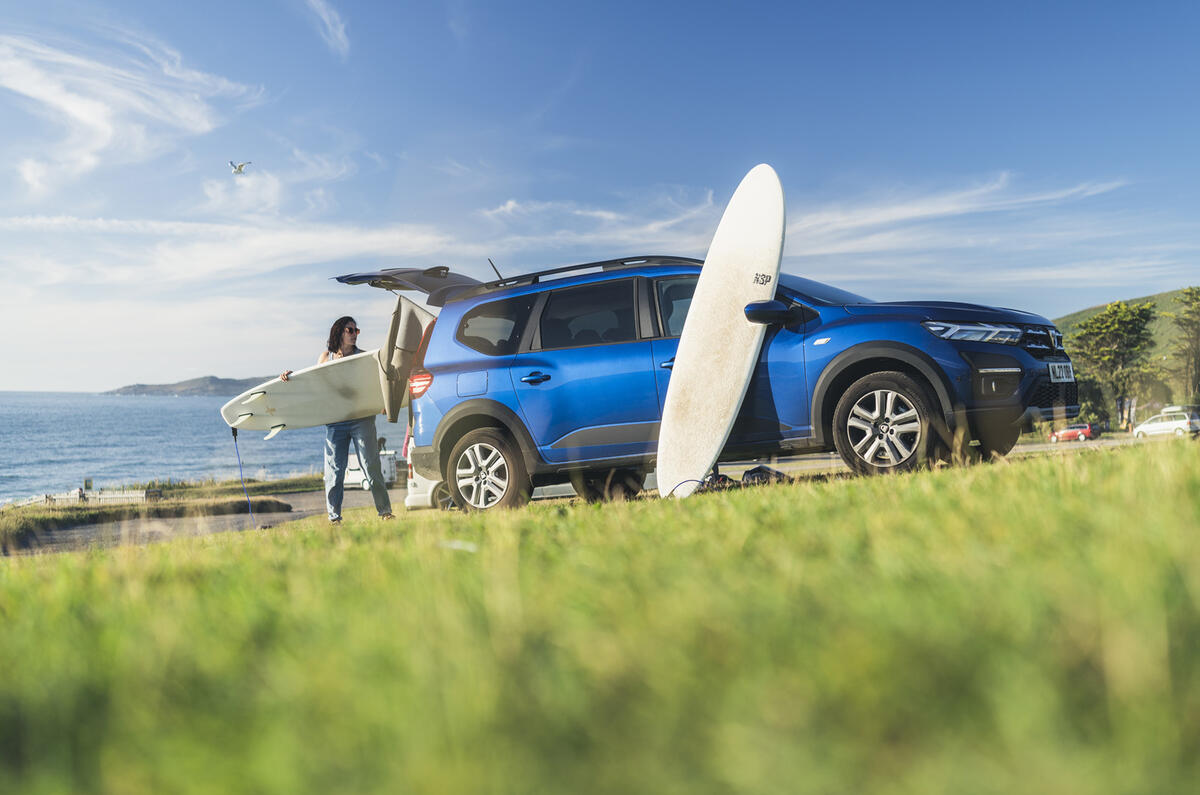
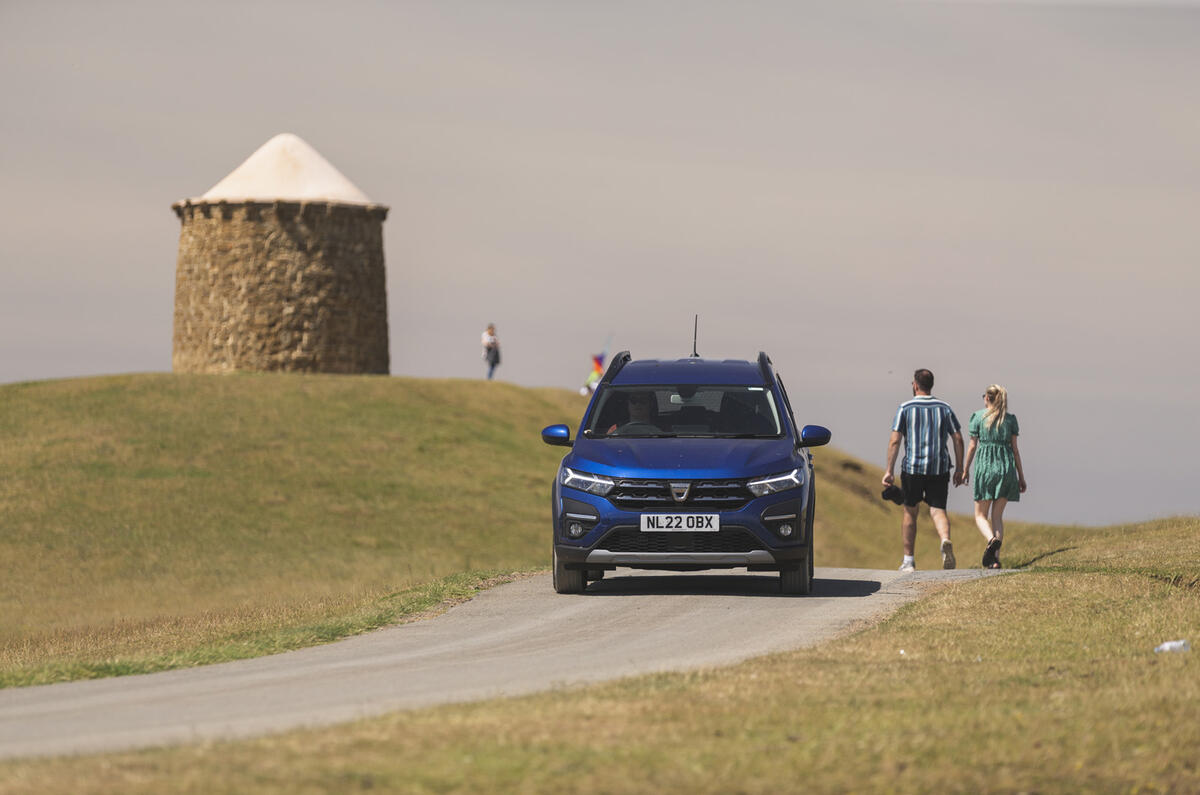
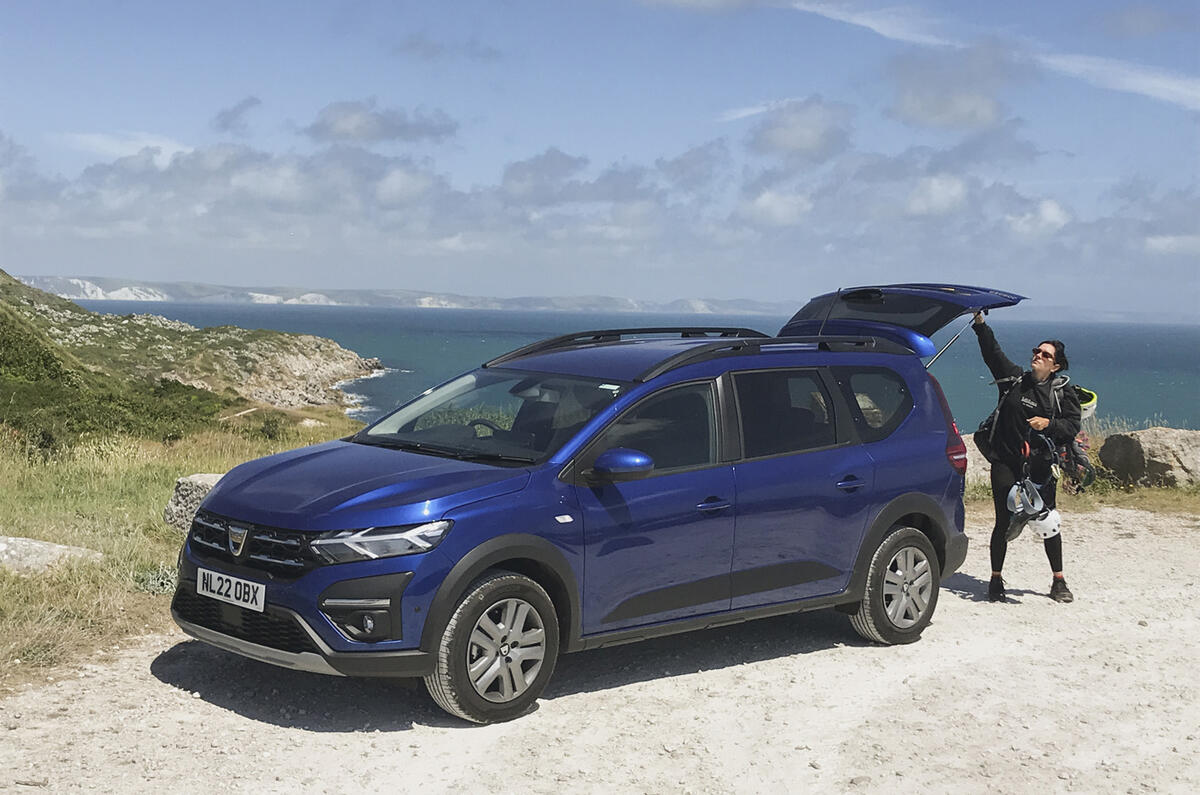
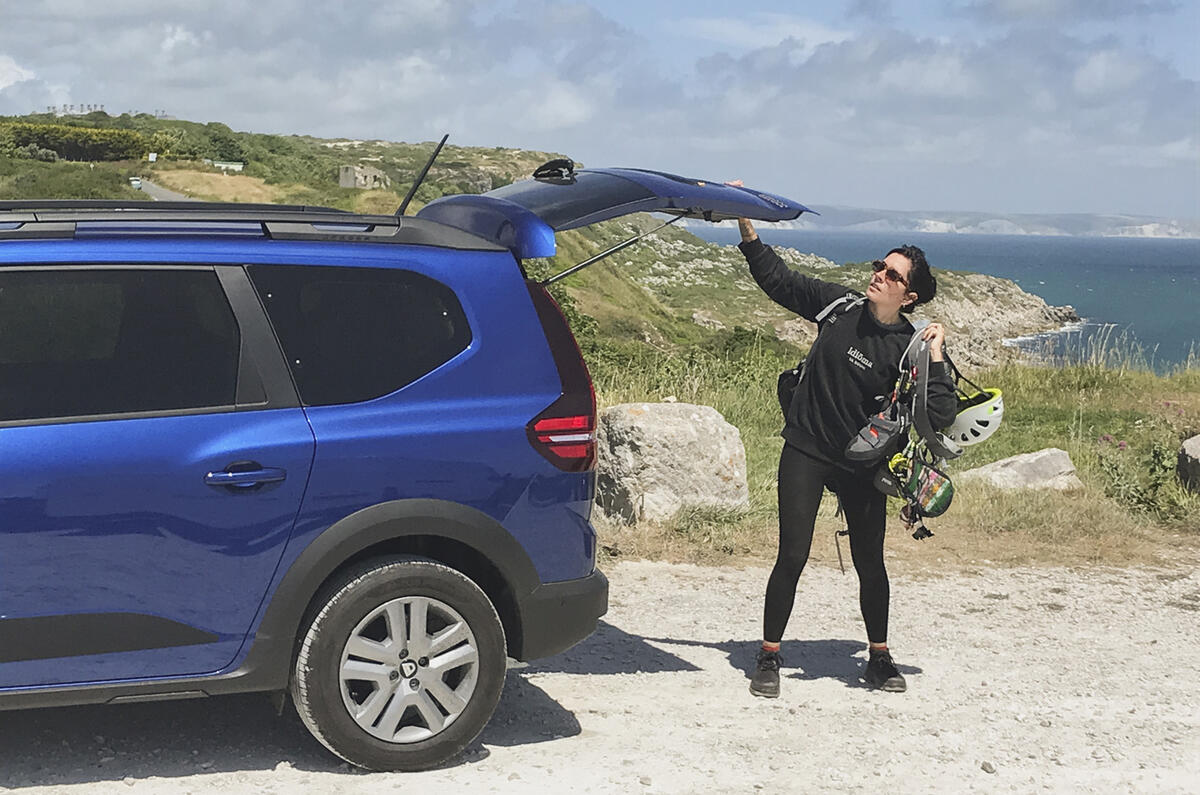
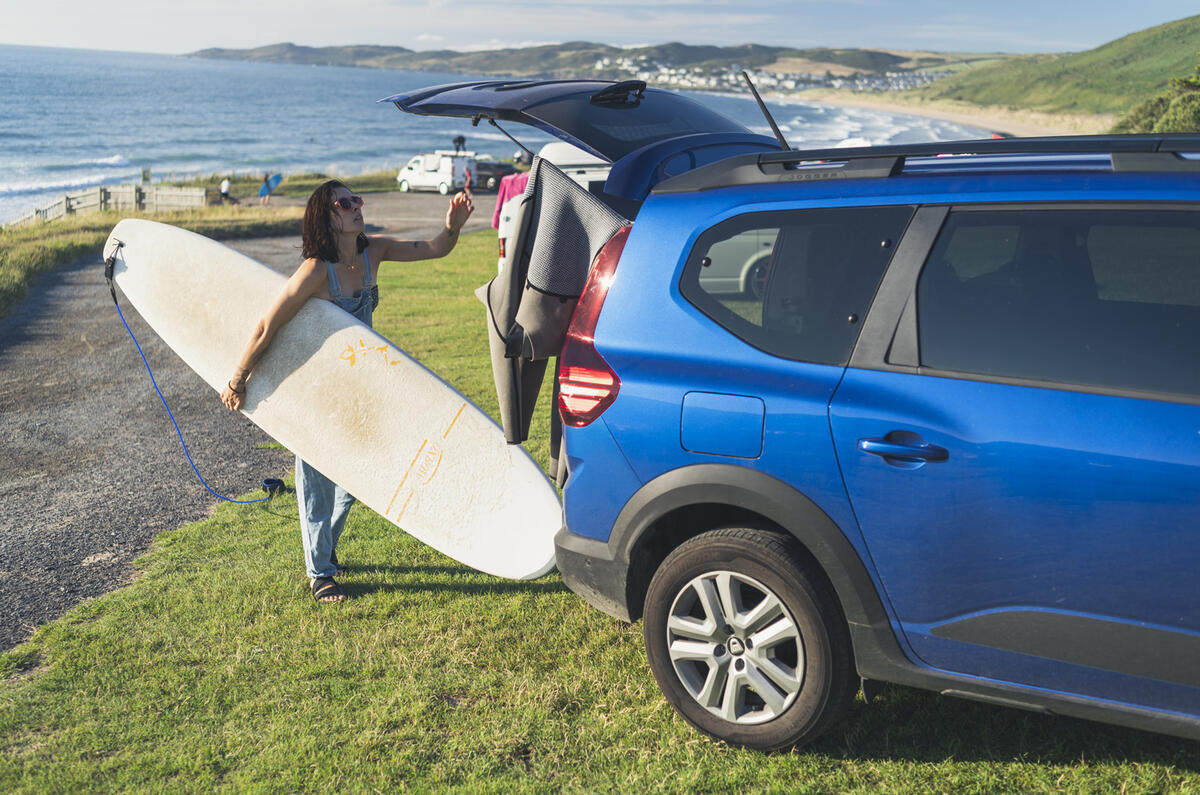

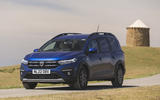
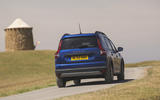
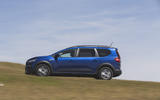
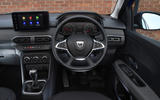
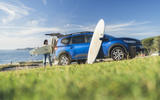
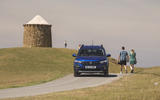

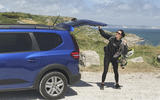
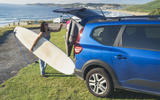
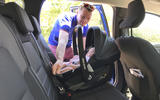
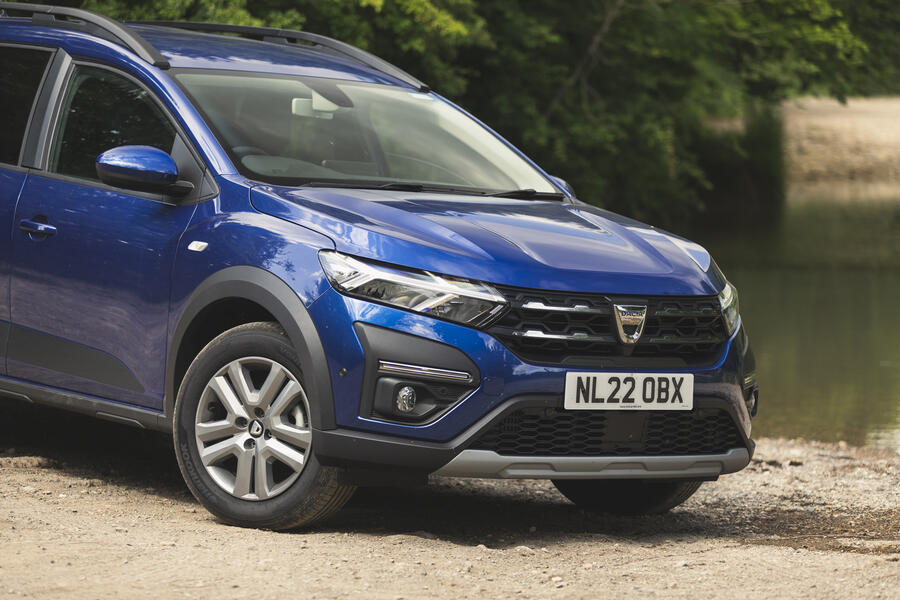

Join the debate
Add your comment
Upselling, £300 for a spare wheel, £300 for a small service a case of upselling it seems. Either way when a journalist uses the words downright dangerous I would steer clear, unlike the car.
There seem to be plenty of these available new (with small discount) or with delivery miles suggesting sales are not as strong as one would expect. This sounds like a great car for those needing a basic, affordable, useful new vehicle - so I suppose the lack of sales reflects the current cost crisis.